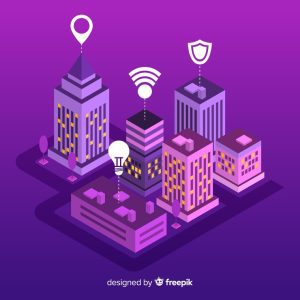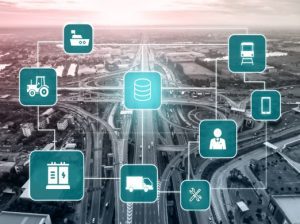The concept of smart cities has emerged as a transformative vision for urban living, integrating technology and data to improve the quality of life for residents while enhancing urban sustainability. As cities worldwide grapple with rapid population growth, urbanization, and environmental challenges, the need for innovative solutions has never been more critical. This article explores the future of smart cities, highlighting the latest innovations, their benefits, and the challenges that must be addressed to fully realize this vision.
What Are Smart Cities?
Smart cities leverage technology, data, and innovative practices to enhance the efficiency of city operations, improve public services, and engage citizens. The integration of Internet of Things (IoT) devices, artificial intelligence (AI), and big data analytics allows for real-time monitoring and management of city resources, leading to improved decision-making and enhanced urban living.
Innovations Driving Smart Cities

1. IoT and Connected Infrastructure
Internet of Things (IoT) devices form the backbone of smart city infrastructure. Sensors embedded in roads, buildings, and public spaces collect data on everything from traffic patterns to air quality. This data enables city planners to optimize resource allocation and improve public services.
Case Study: Barcelona, Spain
Barcelona has implemented an extensive network of sensors and IoT devices that monitor various aspects of urban life. For instance, smart trash bins equipped with sensors signal when they need to be emptied, reducing unnecessary pickups and saving on waste management costs. Additionally, smart traffic lights adjust in real-time based on traffic flow, improving congestion and reducing commute times.
2. Smart Transportation

The future of smart cities is closely tied to innovations in transportation. Smart transportation systems include autonomous vehicles, real-time public transit tracking, and integrated mobility solutions that connect various modes of transport.
Example: Singapore
Singapore’s smart transportation system uses real-time data analytics to manage traffic flow effectively. The Land Transport Authority (LTA) has developed a comprehensive network of sensors and cameras that monitor traffic conditions. The data collected is used to optimize traffic signals, provide real-time updates to commuters, and enhance public transport scheduling. Moreover, Singapore is actively testing autonomous vehicles to further improve urban mobility.
3. Energy Efficiency and Sustainability
Sustainable energy solutions are at the forefront of smart city innovations. From renewable energy sources to smart grids, cities are increasingly focusing on reducing their carbon footprint and enhancing energy efficiency.
Case Study: San Diego, California
San Diego is a leader in solar energy implementation, boasting one of the highest rates of solar panel installations in the United States. The city has also developed a smart grid system that allows for better management of energy distribution, incorporating renewable energy sources. By using data analytics, San Diego can predict energy demand and optimize supply, significantly reducing reliance on fossil fuels.
4. Smart Water Management

Water scarcity is a growing concern for urban areas worldwide. Smart water management systems utilize sensors and data analytics to monitor water usage, detect leaks, and ensure efficient distribution.
Example: Amsterdam, Netherlands
Amsterdam has implemented smart water management solutions that track water quality and consumption in real-time. The city uses advanced metering infrastructure (AMI) to monitor water usage patterns and detect leaks promptly. This proactive approach not only saves water but also reduces operational costs for the city.
5. Public Safety and Security
Innovations in public safety are vital for creating safer urban environments. Smart cities are utilizing advanced surveillance systems, predictive analytics, and community engagement platforms to enhance security.
Case Study: New York City, USA
New York City has adopted a range of smart technologies to improve public safety. The NYPD employs predictive policing algorithms that analyze crime data to identify hotspots and allocate resources effectively. Additionally, the city has expanded its surveillance network, integrating real-time video feeds to monitor public spaces and respond quickly to incidents.
Benefits of Smart Cities
The transition to smart cities offers numerous benefits that enhance urban living:
1. Improved Quality of Life
Smart cities prioritize the needs of residents, offering improved services, efficient public transport, and enhanced public spaces. Access to real-time information empowers citizens to make informed decisions about their daily activities.
2. Environmental Sustainability
By adopting innovative technologies, smart cities can reduce their carbon footprint and promote sustainable practices. From energy-efficient buildings to smart waste management, cities can minimize environmental impact while meeting the needs of their populations.
3. Economic Growth

The integration of technology into urban infrastructure fosters innovation and attracts businesses. Smart cities create an ecosystem conducive to economic growth, job creation, and improved services, making them attractive locations for investment.
4. Enhanced Public Safety
Smart technologies contribute to safer urban environments through improved surveillance, efficient emergency response systems, and data-driven policing strategies. Citizens benefit from reduced crime rates and increased confidence in public safety measures.
Challenges Facing Smart Cities
While the potential of smart cities is immense, several challenges must be addressed to ensure successful implementation:
1. Data Privacy and Security
The extensive use of sensors and data collection raises concerns about privacy and data security. Smart cities must implement robust data protection measures to safeguard citizens’ information from breaches and misuse.
2. Digital Divide
The benefits of smart cities must be accessible to all residents, including those from marginalized communities. Ensuring equitable access to technology and services is essential to avoid exacerbating social inequalities.
3. High Implementation Costs
The transition to smart city infrastructure often requires significant investment. Cities must find ways to fund these initiatives while balancing other pressing urban needs, such as affordable housing and education.
4. Integration of Legacy Systems
Many cities operate with outdated infrastructure that may not be compatible with new technologies. Successfully integrating legacy systems with modern solutions poses a considerable challenge for urban planners and policymakers.
Conclusion
The future of smart cities is bright, driven by innovative technologies that promise to enhance urban living, promote sustainability, and stimulate economic growth. However, realizing this vision requires careful consideration of the challenges that accompany these advancements. By prioritizing data privacy, ensuring equitable access, and investing in infrastructure, cities can create environments that truly benefit all residents. As we look ahead, the continued evolution of smart cities will depend on collaboration among governments, businesses, and communities to build a sustainable and inclusive urban future.












